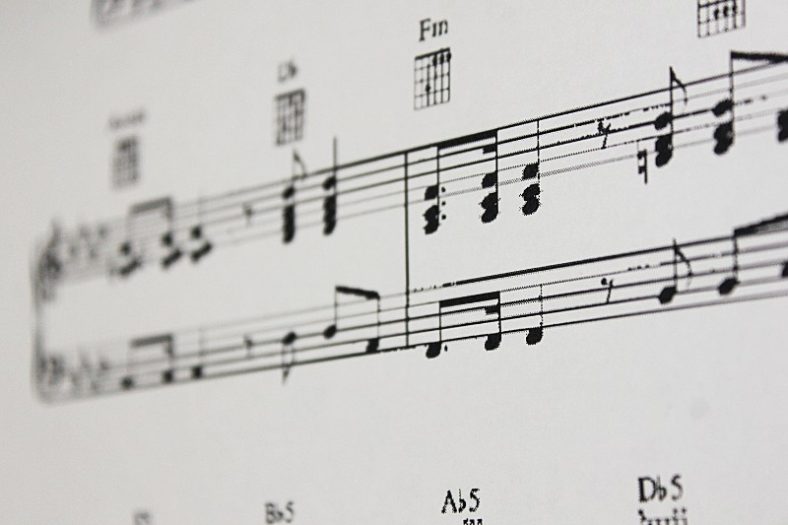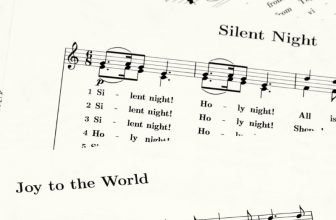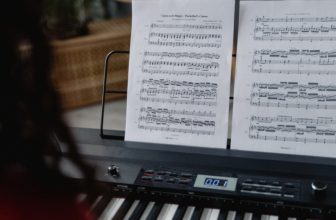How to Determine the Key of a Song

You can determine the key of a song by analyzing its chords, humming along to find the root note on the piano, looking at the sharps and flats in the song’s sheet music, using key-finding software, or conducting a basic Google search. In some cases, you also need to identify major and minor scales.
Contents
Methods for identifying the key of a song
All songs have a key, even if they feature non-diatonic chords that don’t belong to such a key. There are several ways of identifying the key of a song; regardless of your knowledge of music theory, I believe you’ll find at least one of the methods listed below suitable.
1. Analyzing the chords in the song
Unless you’re lucky to have perfect pitch, you won’t find the key of a song instantly just by listening to it. But if you know the chords of a song, you already have all the tools you need to correctly identify its key. The key (no pun intended) to doing so is analyzing the first, last, and most common chord featured in the song’s chord progression.
If you’re playing a song that starts with the chord G Major and in which G Major is the most-commonly featured chord, then there’s a very good chance that song is in the key of G Major. The same applies to a song that starts and ends with A Minor and in which A minor is heavily featured (in this case, the song’s probably in the key of A Minor).
Naturally, this is a rule of thumb, not a mathematical formula that applies to all songs. In some cases, you just need to determine or “feel” which chord sounds the most like “home.” In western music, the root note often conveys a feeling of resolve in opposition to a feeling of tension. When a chord is introduced in the song and creates a sensation of arrival, closure, or conclusion – that chord is most likely the song’s root note.
2. Humming along to the song
You won’t always have access to the chords of a song. So, a good alternative way of identifying its key is by humming along to it. Try to find a note that fits seamlessly with the song at all moments, and that will most likely be the song’s root note. Then, use a piano to find the note that you were singing.
This method is easier than it seems, but it can be tricky for one reason: it’s based on one fundamental note, not on one fundamental chord. This means that, after finding the root note of the song, you’ll have to determine whether it is on a major or minor key. I will explore this topic below, but the fundamental thing to keep in mind is that happy songs tend to be in a major key while sad songs tend to be in a minor key.
Note: you can also try using a tuner app to see which note you’re humming. Naturally, many might have difficulty replicating the exact note sound, but it’s worth a shot.
3. Looking at the song’s sheet music
Most pieces of sheet music list the key of the song. But some only have information regarding its notes. If you’re looking at the sheet music of a song and you don’t know its key, you can quickly find it by looking at the number of sharps and flats in the treble and bass clefs.
Sharps and flats are the black keys on the piano, and they can tell you a lot about a song’s key. If there are no sharps and flats in the song’s sheet music, then the song has to be in the key of C Major or A Minor (both of which use only white keys). But how can you distinguish between the many keys that feature one or more sharps (#) and flats (♭)?
Well, the secret is to identify the last sharp in the scale and count one half-step up. If the final sharp in the sheet music of a song is A#, then the song should be in the key of B Major.
Once again, it’s important to know the difference between major and minor scales. In the case of a song that’s in a minor key, you need to identify the last sharp and count two half-steps up instead of one. So, if the last sharp in the sheet music of a song is A# (or in this case, B♭), then the song should be in the key of C Minor.
4. Using key-finding software
We’re lucky to live in a technological age in which many tools are available to help us find a song’s key. Using key-finding software is one of the easiest ways of determining the key of a song because it doesn’t require any knowledge of music theory, or even a trained ear.
There are many VSTs, websites, and apps to choose from, some of which are either free or very accessible. You can find 11 of the best in this article.
5. Searching Google
If you’re trying to find a popular song’s key, searching Google is sometimes the best method. Simply write the name of the song followed by the word “key” and Google will provide you with the right answer.
While extremely convenient, this method won’t solve all of your key-finding needs. Sometimes Google won’t know the key of a song (especially if it’s not a very popular song) or will even provide you with the wrong answer. Nonetheless, this should work like a charm for 99% of well-known songs.
What is a song’s key?
A song’s key is the note around which the song is centered. Also known as the root note or tonic, this note tends to play harmoniously at any moment of the song. The key of a song also includes the song’s scale, which is generally major or minor.
The key of The Beatles’ hit song “Hey Jude,” for example, is F Major. By knowing this alone, one can improvise flawlessly on top of the song without practicing. Knowing the key of a song is also useful for finding the chords of the song without looking at chord tabs or sheet music.
Learning how to identify a song’s key is also great for composing. If you’re working with a basic motif and want to add some harmony to it, knowing the key that best suits the motif is the best way of coming up with a fitting chord progression on the spot.
Every music producer and instrumentist should know how to quickly identify a song’s key. Luckily, there are various methods for doing so.
How to distinguish between major and minor scales
While there are seven basic modes in western music, most songs tend to be composed either in the Major or Minor mode (which is the same as the Major and Minor scales). Learning how to distinguish between these two is the best way of correctly finding the key of a song after identifying its root note.
The quickest way of doing so is by listening carefully to the song’s mood. While there are exceptions to every rule in music, happy songs will probably be in a major key while sad songs will probably be in a minor key. But is there any way of knowing for sure? A good way to test whether a song is in a major or minor key is by playing the third note of both scales and listening to how it fits with the song.
Imagine that you’re trying to find the key of a song that’s neither too happy nor too sad and that’s centered around the note C. You just need to play the third note of the C Major scale (E) and see if it fits with the song. If it doesn’t, try the third note of the C Minor Scale (E♭) to see if it sounds any better. Listening to the major and minor thirds in the context of a song is perfect for telling major and minor scales apart.
Watch out for non-diatonic chords
In western music, a non-diatonic chord is a chord that uses notes that aren’t part of the scale (i.e., key) of a song. The most common non-diatonic chord is the flat-six chord, which is used for creating a sense of tension. However, there are plenty of examples of other non-diatonic chords, especially in genres like jazz, world music, and math rock.
The key of the song “I Saw Her Standing There,” by The Beatles, is E Major, but the song uses a flat-six chord featuring notes that are not part of the E Major scale. There are countless other examples of this in popular music. Either way, don’t get fooled by non-diatonic chords. Even songs that rely heavily on chords outside the scale are centered around a fundamental root note and major-scale mode.
Conclusion
I hope this guide to determining the key of a song will help you to play, jam, and compose more quickly and with better results. Any of the five methods listed above should work for any song, but it’s better to know them all.





